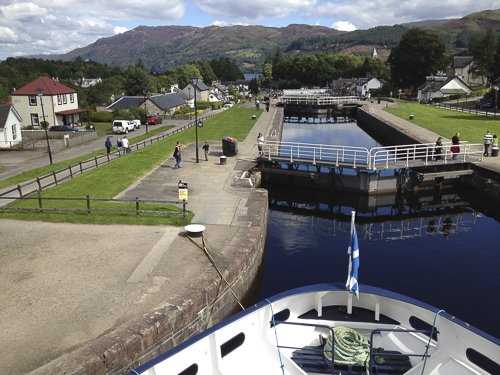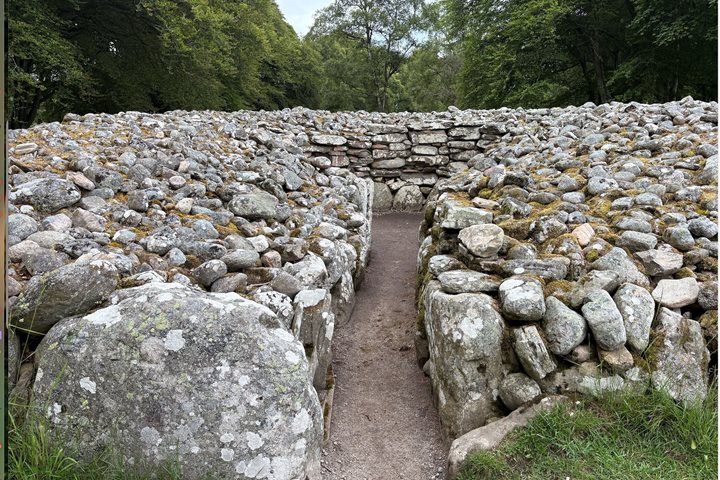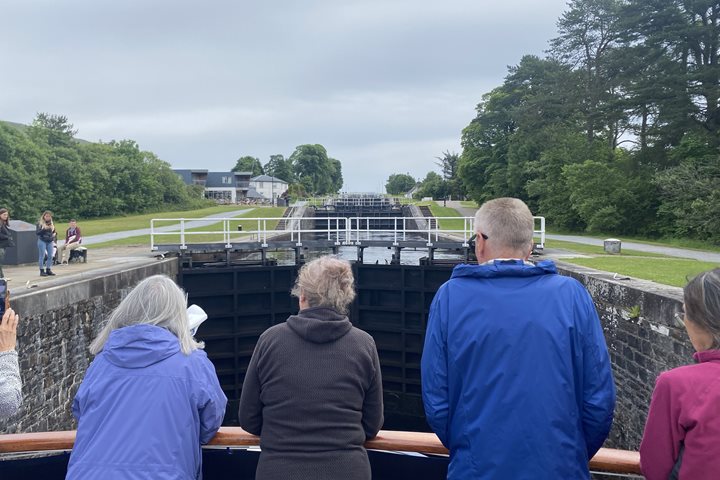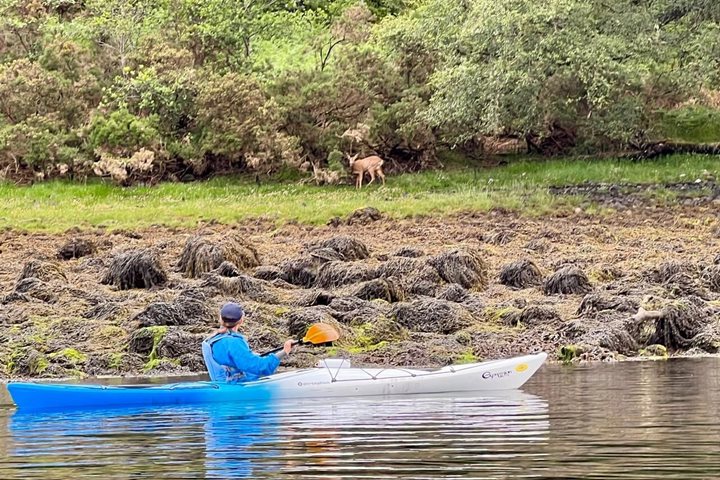We slipped away from Banavie at breakfast time in fine conditions, the brooding massif of Ben Nevis, Britain’s highest peak, to starboard. The mountain is symbolic of the many changing faces of Scottish weather: on a fine summer’s day family groups stroll to the summit passed en route by joggers making the same ascent; a model T Ford was once driven to the summit as a stunt. Yet, in the winter months, its treacherous north face is covered in ice and was chosen by the Everest expedition team for a practice climbs. At any time the mountain can change its character suddenly from benign to menacing so that the mountain rescue services based in Fort William are kept busy throughout the year.
The Caledonian Canal follows a natural slip-fault that runs northwest to southeast across the Scottish Highlands and it was the great Scottish engineer Thomas Telford who won the government contract to build a canal through the Great Glen, a task he undertook between 1806 and 1823. This was at the time of the Napoleonic Wars, the canal devised to enable British naval vessels to move quickly from one side of the country to the other without having to negotiate the treacherous seas off the north coast of Scotland. Not only were the wars over by the time the canal was finished but the age of steam had replaced the age of sail producing vessels that were too large for the canal to accommodate. Thus outmoded, the canal never became commercially viable but has survived into the 21st century as a premium leisure facility, this ancient route-way now being followed by numerous leisure craft as well as hikers along the Great Glen Way, one of Scotland’s major long distance footpaths.
Morning highlights included the canal’s only surviving manually-operated bridge at Moy, the tranquil waters of Loch Lochy, the narrow tree-lined cutting known as Laggan Avenue and the shallow Loch Oich, the highest point of the canal at some 106 feet, navigated through a winding channel.
At Fort Augustus there was some improvisation to our best-laid plans as our expected berth at the top of the flight of locks was occupied and the ship had to await clearance to proceed downward to an alternative berthing on the shores of Loch Ness. There we were finally able to enjoy an evening’s kayaking, or a hike to the older settlement of Kilchuimin. All had enjoyed the sights and sounds of Fort Augustus before re-joining the ship for a much-appreciated pre-dinner whisky tasting.









